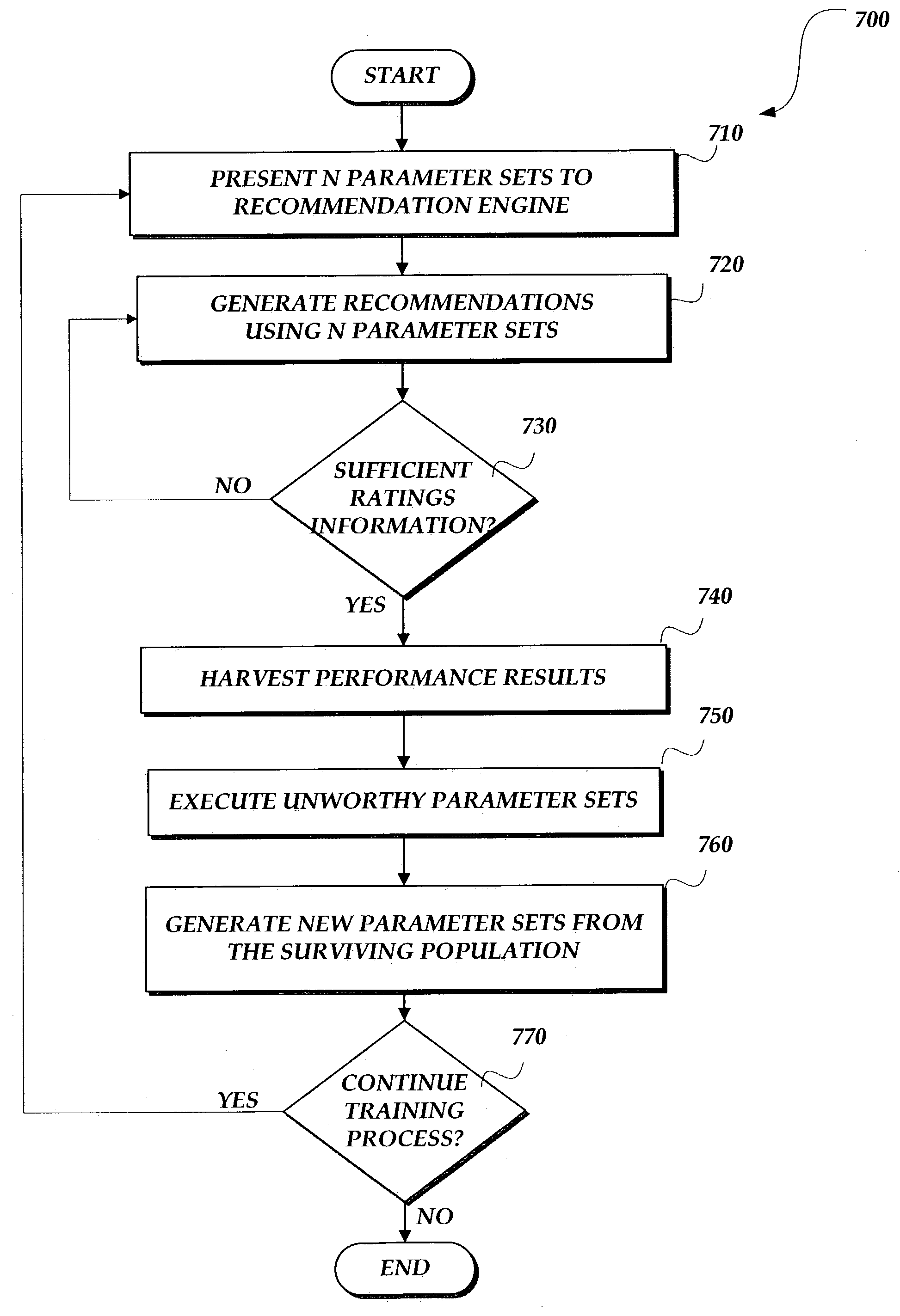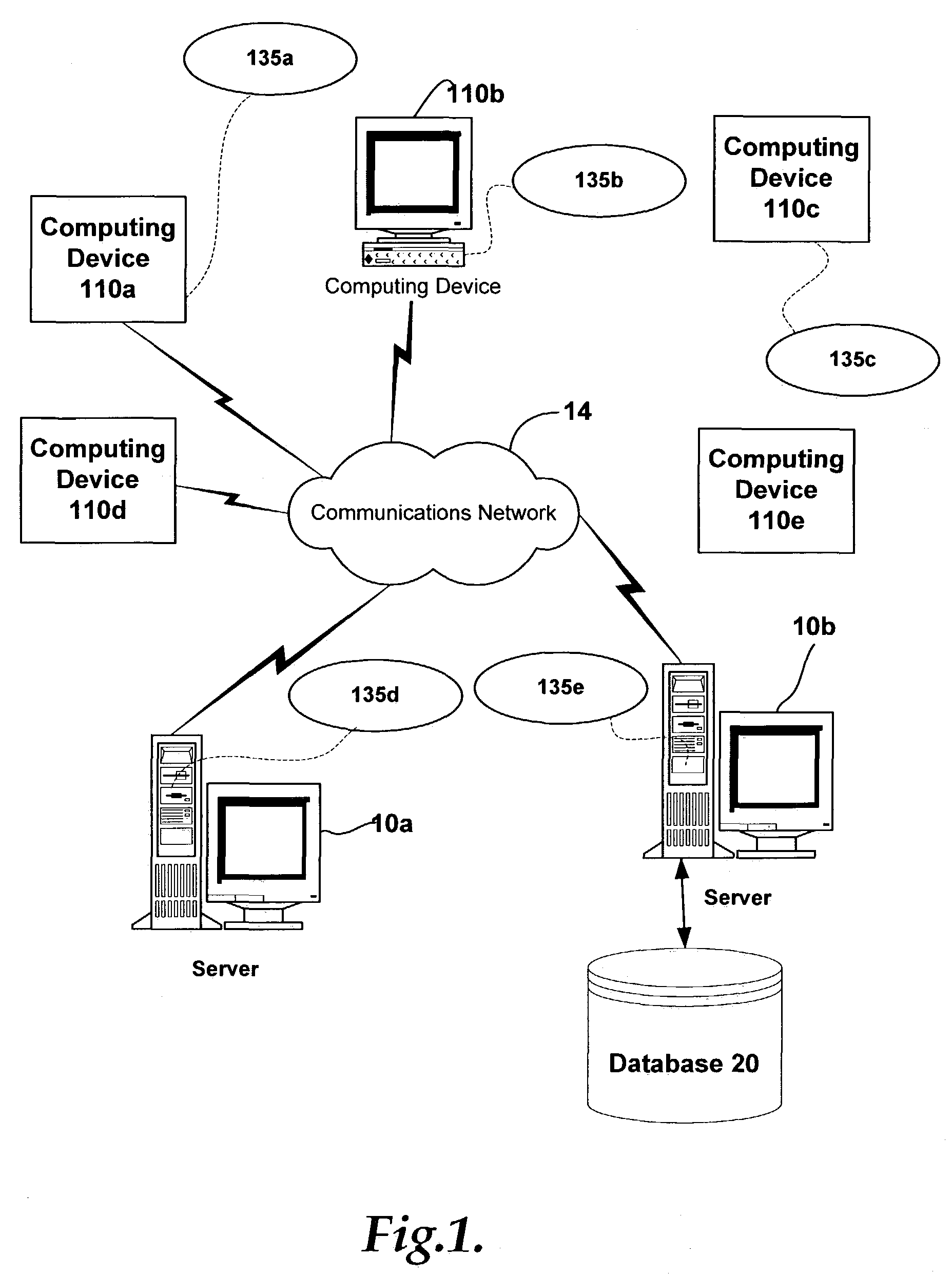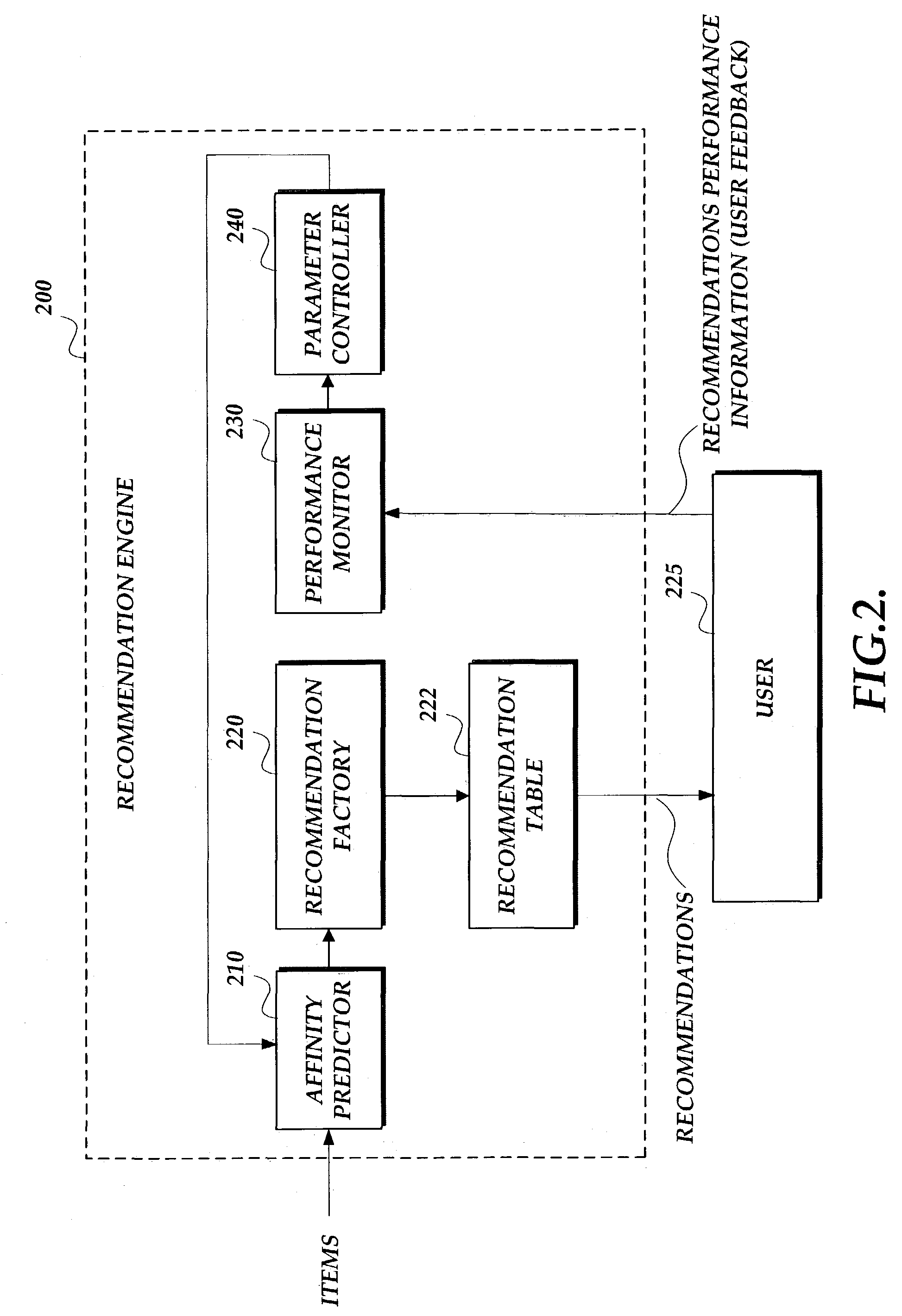System for delivering recommendations
a recommendation system and recommendation technology, applied in the direction of instruments, nuclear elements, nuclear engineering, etc., can solve the problems of unable to detect or act on such dissimilarity, the use of this type of collaborative filtering approach by itself, and the output data normally available only for complete albums
- Summary
- Abstract
- Description
- Claims
- Application Information
AI Technical Summary
Benefits of technology
Problems solved by technology
Method used
Image
Examples
Embodiment Construction
[0027]The embodiment of the present invention relates to a system for generating recommendations, which automatically optimizes its parameters over time without human intervention. While known recommendation engines used intrinsic properties of items to display recommendations, the present engine adjusts its internal parameters in response to the measured performance of the recommendations as determined by user behavior. In one embodiment, the user behavior is represented by feedback that the user provides in the form of ratings for the recommendations. On the basis of these ratings, the parameters of the system are adjusted. Over time, after a sufficient number of iterations the system settles toward optimal parameter values.
[0028]With regard to FIG. 1, one of ordinary skill in the art can appreciate that a computer 110 or other client device can be deployed as part of a computer network. In this regard, the embodiment of the present invention pertains to any computer system having...
PUM
 Login to View More
Login to View More Abstract
Description
Claims
Application Information
 Login to View More
Login to View More - Generate Ideas
- Intellectual Property
- Life Sciences
- Materials
- Tech Scout
- Unparalleled Data Quality
- Higher Quality Content
- 60% Fewer Hallucinations
Browse by: Latest US Patents, China's latest patents, Technical Efficacy Thesaurus, Application Domain, Technology Topic, Popular Technical Reports.
© 2025 PatSnap. All rights reserved.Legal|Privacy policy|Modern Slavery Act Transparency Statement|Sitemap|About US| Contact US: help@patsnap.com



